Trees Birds Mammals Fish Amphibians Reptiles
Wild Algarve
Bookshop
Leratiomyces ceres (Cooke & Massee) Spooner & Bridge - Redlead Roundhead
Phylum: Basidiomycota - Class: Agaricomycetes - Order: Agaricales - Family: Strophariaceae
Distribution - Taxonomic History - Etymology - Toxicity - Identification - Reference Sources
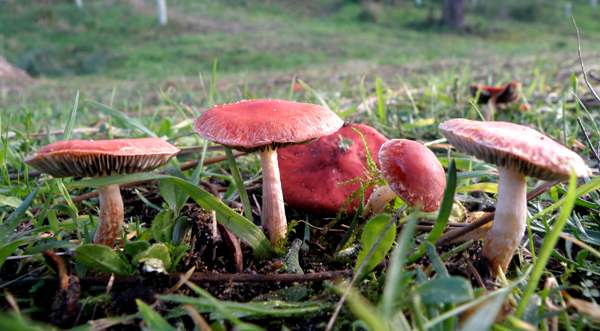
This attractive little mushroom has become much more common now that parks and gardens are mulched with woodchip. In sandy pine forests, particularly in sheltered coastal areas, Redlead Roundheads can occasionally be found growing in grassy areas rich in needle litter and sawdust.
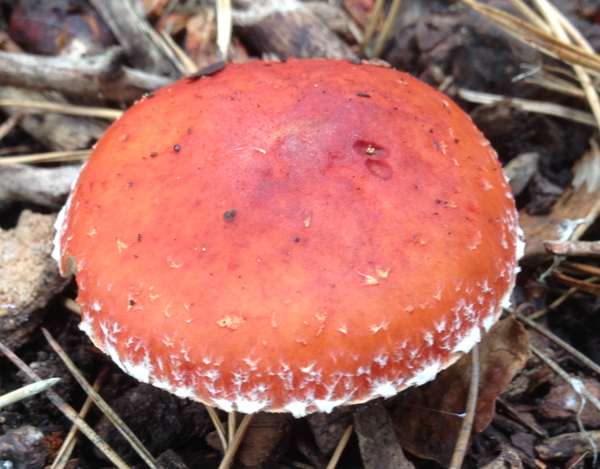
Distribution
In Britain and Ireland the Redlead Roundhead, an alien from Australia, is mainly recorded from southern England. (We have seen it in Dorset and in North Wales.)
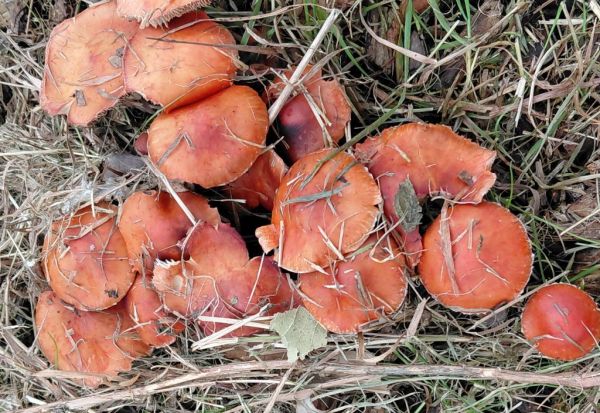
In warm coastal areas of France Leratiomyce ceres sometimes carpets the forest floor beneath pines and other conifers where there is sawdust and wood chip from thinning and felling. Elsewhere in central and southern mainland Europe this attractive little mushroom is a very common sight on heaps of sawdust on roadside verges where trees have been felled.
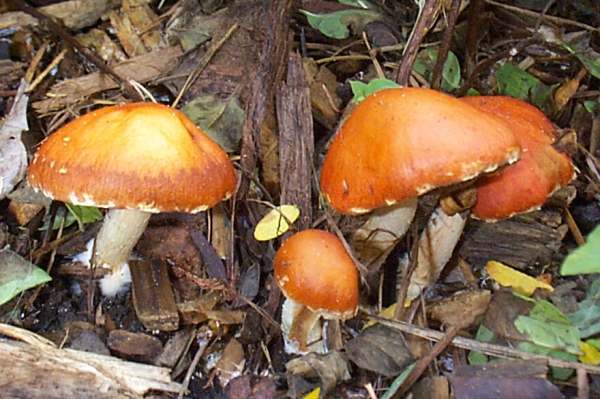
Taxonomic history
When in 1888 British mycologists Mordecai Cubitt Cooke and George Edward Massee (1850 - 1917) described this species, they gave it the binomial scientific name Agaricus ceres. (In the early days of fungal taxonomy most gilled fungi were initially placed in the genus Agaricus, the contents of which has since redistributed across many other newer genera.)
In 2008 Brian Spooner and colleagues established the currently-accepted scientific name of this mushroom as Leratiomyces ceres.
Synonyms of Leratiomyces ceres include Stropharia aurantiaca, by which this species is still most commonly known, as well as Hypholoma aurantiaca, Psilocybe aurantiaca, Psilocybe ceres, Naematoloma rubrococcineum and its basionym Agaricus ceres Cooke & Massee.
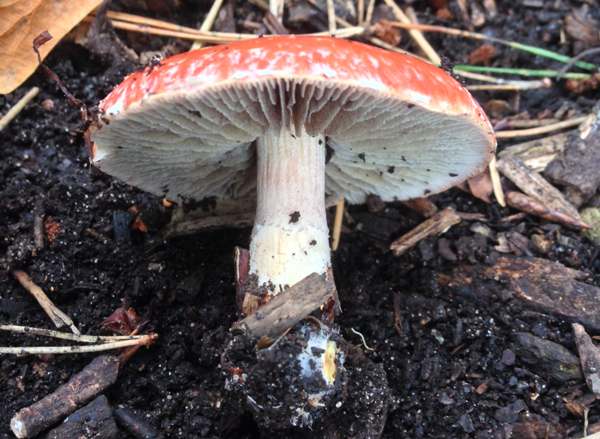
Etymology
This genus name originated in 1907 when Narcisse Théophile Patouillard created the name Le Ratia (which he applied to a puffball fungus) in honour of French botanist and plant collector Auguste-Joseph Le Rat (1872 - 1910), who on various occasions had provided Patouillard with fungal specimens that he had collected. From this origin Spooner and colleagues derived the new genus name Leratiomyces.
The specific epithet ceres is a reference to the (usually!) cherry red colour of caps of the Redlead Roundhead.
Toxicity
Despite an attractive appearance, this inedible species is likely to cause an upset stomach if it is eaten. (The very similar Leratiomyces squamosus is known to contain hallucinogenic psilocybin/psilocin.)
Identification guide
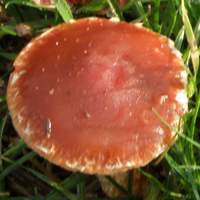 |
Cap
Orange-red; convex, becoming flatter; pale veil fragments often cling to cap margins; 1.5 to 6cm across. |
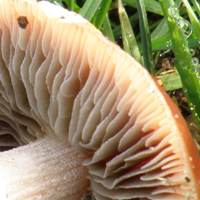 |
Gills
Adnate; fairly crowded; cream to olive becoming purplish-brown with paler edges.
Stem
3 to 9cm tall and 3 to 8mm dia.; white, flushed red towards base; covered in fibrous scales when young; no ring. |
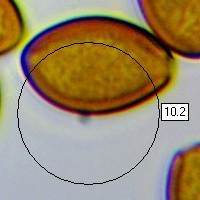 |
Spores
Ellipsoidal, smooth, 9.5-14 x 6.5-7.5; with a germ pore.
Spore print
Purple-brown. |
Odour/taste |
Not distinctive. |
Habitat & Ecological role |
Most often found on wood mulch or on sandy (often coastal) soil that is rich in rotting twigs and needles from pine trees. |
Season |
June to November in Britain and Ireland; usually continuing through to January in southern Europe. |
Similar species |
The Bloodred Webcap, Cortinarius sanguineus, has a red cap but its gills are initially bright red and become a rusty reddish brown at maturity; its spore print is rusty brown rather than purple-brown. |
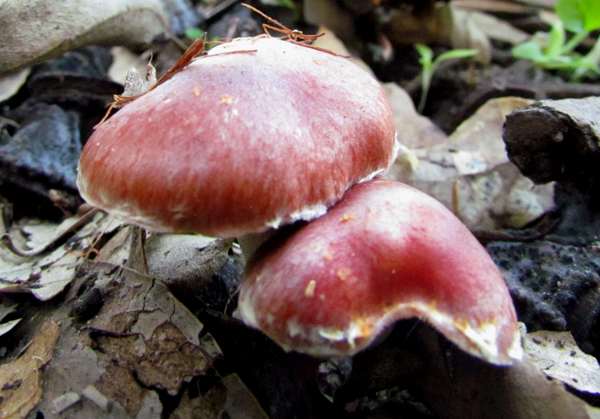
Reference Sources
Fascinated by Fungi, 2nd Edition, Pat O'Reilly 2016, reprinted by Coch-y-bonddu Books in 2022.
Bridge PD, Spooner BM, Beever RE, Park DC. (2008). Taxonomy of the fungus commonly known as Stropharia aurantiaca, with new combinations in Leratiomyces. Mycotaxon 103:109–121.
Dictionary of the Fungi; Paul M. Kirk, Paul F. Cannon, David W. Minter and J. A. Stalpers; CABI, 2008
Taxonomic history and synonym information on these pages is drawn from many sources but in particular from the British Mycological Society's GB Checklist of Fungi.
Acknowledgements
This page includes pictures kindly contributed by Simon Harding.
Top of page...
Fascinated by Fungi. Back by popular demand, Pat O'Reilly's best-selling 450-page hardback book is available now. The latest second edition was republished with a sparkling new cover design in September 2022 by Coch-y-Bonddu Books. Full details and copies are available from the publisher's online bookshop...